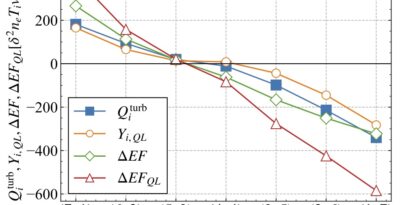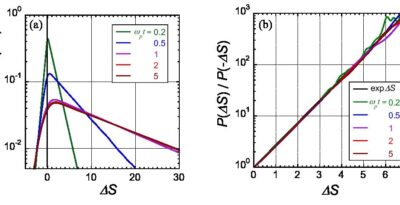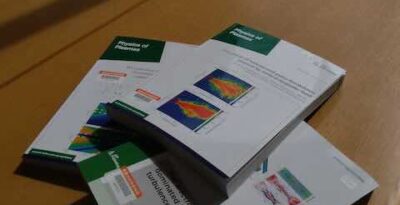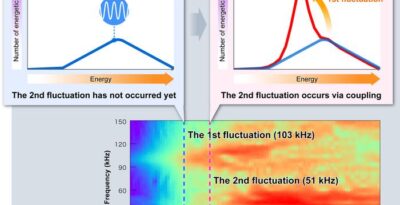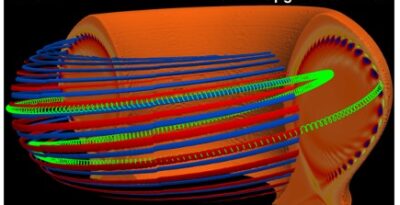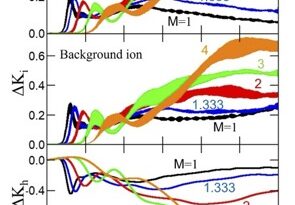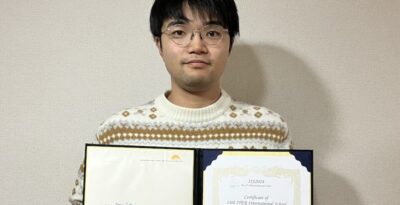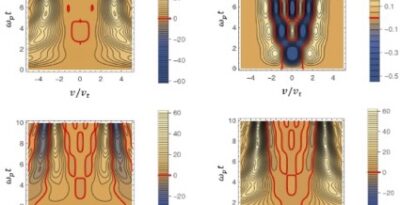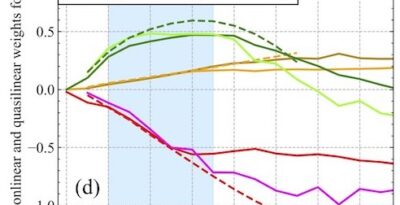Latest News
News List-
1. Purpose of the Unit
In global phenomena of nature like climate change across the whole-earth scale, multiple physical processes with different scales in time and space such as the air pollution and the solar activity interact with each other. The nuclear fusion plasma is one of the typical example of these complex global phenomena. The individual plasma particles, the ions and the electrons, on the microscopic hierarchy interact with the whole of the plasma on the macroscopic one. The complex global phenomena are now regarded as an important issue in various academic fields other than the fusion.
In order to understand the complex global phenomena which have above-mentioned feature, it is necessary to make use of “the Complex Global Simulation (CGS)” technique, where the inter-hierarchy interactions are appropriately taken into account. However, the materialization of CGS is a difficult problem. The reason is that the renormalization of all hierarchies into a single system of fundamental physical equations needs a huge computer resource when there are extremely large scale gaps in time and space between the hierarchies. Therefore, this is a pessimistic approach to solve the problem even if the performance of the super computer improves much in future. A new methodology to interlock the multi-scale or multi-physics models should be developed instead.
The CGS Unit promotes the simulation researches by developing the methodology, and aims at realizing the CGS which appropriately includes the interactions with microscopic scales.

-
2. Our goals
As our core goals of this Unit, we will develop
1) global simulations of the whole magnetic confinement fusion plasma including the core plasma and the edge plasma, and
2) a methodology with broad applicability to achieve simulations that closely reproduce real-world phenomena, beyond the strong limitations imposed by the capacity and capability of the supercomputer.
-
Multi-hierarchy in fusion burning plasma
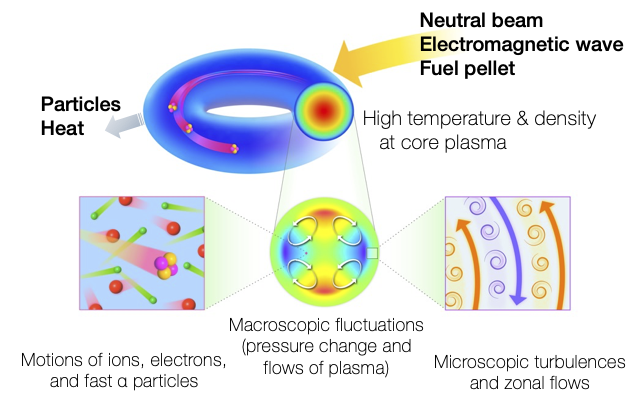
In the prospective thermo-nuclear fusion reactor, a high-temperature plasma state of higher than 100,000,000°C which is necessary for fusion reaction is sustained by the heating through the fast α particles provided by the nuclear reaction. In such plasma, fluctuations with various scales arise due to the temperature gradient, fast particles themselves, etc. The fluctuations develop into turbulent state and induce zonal flows. These fluctuations and flows may affect the confinement of the plasma particles and the heat.
The CGS Unit aims to develop simulation methods that take into account the interactions between hierarchies such as fast particles, ions, and macroscopic magnetohydrodynamic perturbations, and to realize global simulations over whole fusion plasma to predict and elucidate unsolved problems in fusion plasma. Moreover, we apply the newly developed methods to astrophysical plasma where fast particles
-
Multi-hierarchy in dissipative turbulence
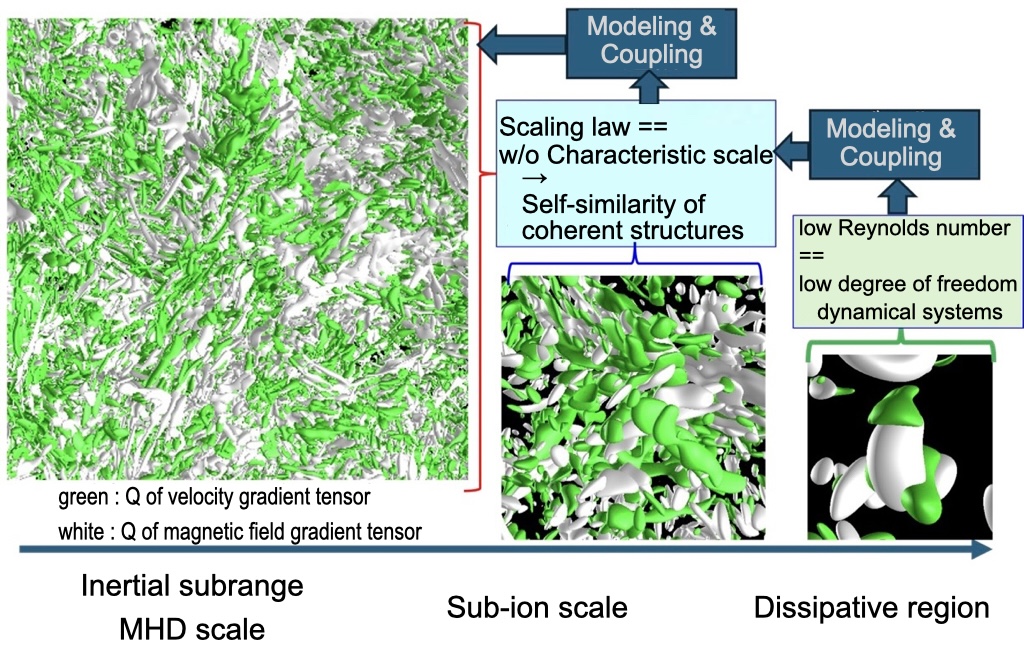
Example : Hall MHD Q-criterion Turbulence is a keyword in many fields (fluid dynamics, meteorology, aeronautics, astronautics, nuclear fusion, superfluidity, chemical reactions, etc.) Usually, turbulent phenomena are described by partial differential equations with dissipation. Turbulence is characterized by scale hierarchy and dissipation. Increasing the accuracy of the calculations in the dissipation hierarchy ,i.e., microscopic scales, will result in more realistic solution, but on the other hand, this will cause the calculation size to become huge. Therefore, it is necessary to make the calculations compact in the dissipative scales.
In this unit, we elucidate and model the structure of the dissipative hierarchy and the interactions between the scales. We then couple the modeling of the dissipative scale with the modeling of the scale hierarchy to achieve a compact simulation which is closer to the real phenomenon. We will establish this modeling as a methodology and apply it to various research fields.
Member
*:Unit Leader
-
Assoc. Prof. HORI, KumikoFields Geophysical and Astrophysical Fluid Dynamics
-
Assist. Prof. ISHIZAKI, RyuichiFields MHD Simulation
-
Guest Prof. KAGEYAMA, AkiraAffiliate Kobe University
-
COE Researcher LI, Hanzheng
-
Prof. MIURA, Hideaki (Unit Leader)Fields Turbulence simulation
-
Assoc. Prof. SATO, MasahikoFields Kinetic MHD hybrid simulation
-
Assist. Prof. SEKI, RyosukeFields Kinetic MHD hybrid simulation
-
Prof. SUGAMA, HideoFields Gyrokinetic theory
-
Prof. TODO, YasushiFields Kinetic MHD hybrid simulation
-
Prof. TOIDA, Mieko (Chairperson)Fields Particle Simulation
-
Assoc. Prof. WANG, HaoFields Kinetic MHD hybrid simulation
-
Assist. Prof. WANG, JialeiFields Kinetic MHD hybrid simulation
-
Project Researcher WEI, Shizhao
-
Assoc. Prof. YAMAMOTO, TakashiFields Information network
External Member
-
GOTO, SusumuAffiliate Osaka University, Prof.
-
ISHIZAWA, AkihiroAffiliate Kyoto University, Prof.
-
KAGEYAMA, AkiraAffiliate Kobe University, Prof.
-
MACHIDA, MamiAffiliate NAOJ, Assoc. Prof.
-
TAGUCHI, SatoshiAffiliate Kyoto University, Prof.
-
TAKAHASHI, ToshikiAffiliate Gunma University, Assoc. Prof.
-
TSUJI, YoshiyukiAffiliate Nagoya University, Prof.
-
WATANABE, TakeshiAffiliate Nagoya Inst. Tech., Prof.
-
WATANABE, TomohikoAffiliate Nagoya University, Prof.
-
YOSHIMATSU, KatsunoriAffiliate Nagoya Univerity, Assoc. Prof.
Publications
Contact
Email:cg-sim

